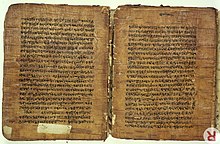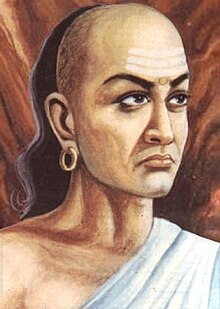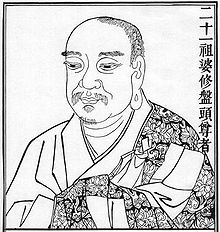List of people from Gandhara
Peshawer basin and Swat Valley but influence going far up to Kabul and the Pothohar Plateau.[1][2] This region played an important role in the history of South Asia and East Asia.[3] Following is the list of important Gandharans from modern day's Gandhara
region in chronological order;
Ancient era Gandharans

Mauryan Empire
Important Gandharans who influenced
Ancient India
include;
- Pāṇini (5th century BC), born in Śalatura he was a Sanskrit philologist, grammarian, and a revered scholar from Gandhara. Pāṇini is known for his text Aṣṭādhyāyī, a sutra-style treatise on Sanskrit grammar.[4][5]
- Takshashila was an ancient Gandharan teacher, philosopher, economist, jurist and royal advisor. Chanakya assisted the first Mauryan emperor Chandragupta in his rise to power, and penned the Arthashastra, which is considered as an early example of political science writing in India.[6]

Founders of various Buddhist schools

Gandharan Buddhist monks directly or indirectly developed important
buddhist schools
and traditions from Gandhara are as follows;
- Jōjitsuschool of Japanese Buddhism.
Asaṅga
from 1208 CE.
- Abhidharmakośakārikā ("Commentary on the Treasury of the Abhidharma") is widely used in Tibetan and East Asian Buddhism.[8]
- Great Vehicle) and Abhidharma-samuccaya.
- Uddiyana (Swat) he is considered the Second Buddha by the Nyingmaschool, which is the oldest Buddhist school in Tibet.
Padmasambhāva, in Tibet
Asaṅga
Translators
Important Gandharans who played a significant role in translation of
are as below;- .
- sutras into Chinese, during the rule of Han dynasty of China.[9]
- Jñānagupta (6th century), translated 39 scriptures in 192 fascicles during the period 561 to 592 into Chinese during the rule of Sui dynasty of China.
- sutras into Chinese during the rule of Tang dynastyof China.
- Dānapāla (11th century), was a Buddhist monk and prolific translator of Sanskrit Buddhist sutras during the Song dynasty in China
Rulers
During the ancient era (500 BC-500 AD) there were multiple independent Gandharan rulers. Notable in this era were:
Porus and king Ambhi
, a 20th century artist's imagination.- Peithon (son of Agenor) (4th century BC), Greek ruler of Gandhara
- Pantaleon (2nd century BC), first Indo Greek ruler of Gandhara
- Menander I (2nd century BC), first Buddhist Indo-Greek ruler of Gandhara

- Archebius (1st century BC), last Indo-Greek ruler of Gandhara
- Maues (1st century BC), first Indo-Scythian ruler of Gandhara
- Kharahostes (1st century BC), last Indo-Scythian ruler of Gandhara
- Gondophares (1st century AD), first Indo-Parthian ruler of Gandhara
- Pacores (1st century AD), last Indo-Parthian ruler of Gandhara
- Vima Takto (1st century AD), first Kushan ruler of Gandhara[15]
- Kanishka (2nd century AD), first Buddhist Kushan ruler of Gandhara[16]
Buddha
- Kipunada (4th century AD), last Kushan ruler of Gandhara
- Kidara I (4th century AD), first Kidarite ruler of Gandhara

- Kandik (5th century AD), last Kidarite ruler of Gandhara
Others
- Korean Peninsula.[17]
See also
- Aṣṭādhyāyī, text by Pāṇini
- Arthashastra, text by Chanakya
- Dzogchen tradition, founded by Garab Dorje
- Maurya empire
- Kushan empire
References
- ISBN 978-90-04-18159-5.
- ISBN 978-90-6186-037-2.
- JSTOR 639350
- ISBN 978-1-134-25161-2.
- ISBN 978-81-208-1494-3
- ^ Trautmann, Thomas R. (1971), Kauṭilya and the Arthaśāstra: a statistical investigation of the authorship and evolution of the text, Brill, p. 12
- ^ Kunsang (2006), p. 125.
- ISBN 978-1-00-021549-6.
- ^ Nattier 2008: 73
- ^ p. xl, Historical Dictionary of Ancient Greek Warfare, J, Woronoff & I. Spence
- ^ Arrian Anabasis of Alexander, V.29.2
- ^ "Porus", Encyclopædia Britannica, retrieved 8 September 2015
- ^ Diodorus Siculus, Bibliotheca, xvii. 86
- ^ Curtius Rufus, Historiae Alexandri Magni, viii. 12
- ^ Falk, Harry (2009). The name of Vema Takhtu. W. Sundermann, A. Hintze & F. de Blois (eds.), Exegisti monumenta - Festschrift in Honour of Nicholas Sims-Williams (Iranica, 17). Wiesbaden : Harrassowitz, pp. 105–116.
- ^ Bracey, Robert (2017). "The Date of Kanishka since 1960 (Indian Historical Review, 2017, 44(1), 1-41)". Indian Historical Review. 44: 1–41.
- ^ "Malananta bring Buddhism to Baekje" in Samguk Yusa III, Ha & Mintz translation, pp. 178-179.
